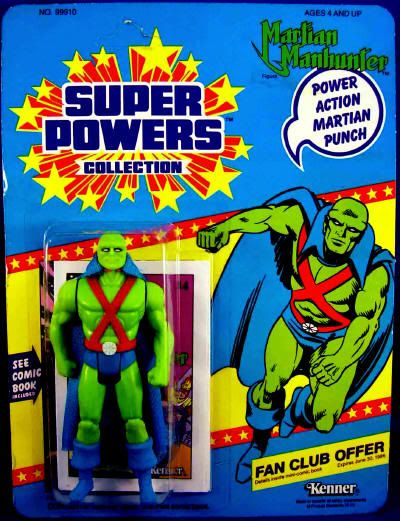
In 1964, the Hasbro toy company released the first "action figure" line, G.I. Joe. They were roughly a foot tall, which we would generally consider dolls today. They featured removable cloth clothing and various accessories, essentially a masculine counterpart to fashion dolls. I believe the first super-hero dolls of this sort were part of the Captain Action line of 1966 from Ideal Toys Corporation. However, rather than full-fledged figures, the Captain Action character would change into accessories/costumes which could turn him into Aquaman, Batman, Captain America, Spider-Man, Superman and many more. His sidekick Action Boy could himself "become" Aqualad, Robin or Superboy. This action figure format popped up throughout the 1970s in various forms, but faded from popularity over time.
I'll confess to owning an Indiana Jones figure from 1981, and piecing together scale dolls around my hero. These included a Gene "The Demon" Simmons KISS doll as main antagonist, numerous Barbie knock-offs as girlfriends/damsels-in-distress, and Ken as Indy's sissy-boy sidekick. I believe I had a Six Million Dollar Man Bigfoot at some point as well. My grandmother asked the doctor if they made me queer, but the man said they would help my social skills. My stepfather disagreed, and quietly gave all my dolls away without consent.
In 1972, the Mego Corporation began producing the "World's Greatest Superheroes!" This was the only time DC and Marvel action figures were part of the same standardized line, standing about eight inches tall with removable fabric costumes. Classic JLA heroes like Superman, Batman, Wonder Woman and Aquaman stood beside Marvel greats like Spider-Man, the Incredible Hulk, Cap and the Fantastic Four. The line was very popular, lasting until 1983.
In the meantime, the Kenner Star Wars action figures revolutionized the industry, offering a much wider selection of characters at a cheaper price. They averaged 3 3/4" in height, with outfits a part of the figural sculpt, and a greater emphasis on weapons and other accessories. The smaller size also allowed for the construction of vehicles and playsets.
For myself, the heyday of Mego was a tad before my time, though I played with my friends'. On the other hand, I was on to Star Wars from jump. In 1976, Mego had tested the waters for the 3 3/4" format with their Comic Action Heroes, which had modest sales. They were truly hideous, crouching monstrosities, and I speak from the experience of having owned (yet rarely enjoyed playing with) about half the line. Hey, I grew up ghetto, and they retailed for less than a buck a piece, so you took what you could get. Anyway, the line was revamped in 1979 as the Mego Pocket Heroes, which were closer to resembling homo sapiens, but cost half again as much as the previous line.
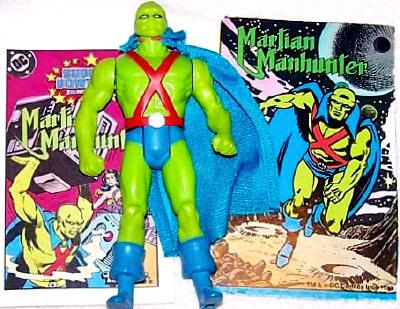
Competition grew increasingly fierce heading into the 1980s. 1981 saw the release of Mattel's Masters of the Universe, capitalizing on the short-lived barbarian trend and popularizing a new 6" high format. In 1982, the same year Hasbro offered its heavily articulated and hugely successful 3 3/4" revamp of G.I. Joe, Mego filed for bankruptcy. This left super-heroes up for grabs, though the demise of Mego saw one big happy family separated by a custody dispute. Mattel pursued the DC Comics license, but lost out to Kenner. They then talked to second choice Marvel Comics, but only if their editor-in-chief Jim Shooter agreed to release a comic book tie-in to help promote the line. This synergy had worked spectacularly with G.I. Joe: A Real American Hero, which snowballed from toy-to-comic-to-animated commercial for both-to-a long running cartoon series (plus sustained toy and comic sales of well over a decade.) Shooter was hot to keep up with DC on the action figure front, and cashed some healthy royalty checks by writing the 12-issue Marvel Super Heroes Secret Wars comic himself. Shooter also wrote the sequel, which involved Peter Parker teaching an omnipotent being to poop, and other things best left unspoken.
The Super Powers Collection debuted in 1984, earning its name through hidden mechanisms within each figure that allowed them to display a triggered action. They offered a Flash whose legs could "sprint," a Plastic Man whose head would pop-up to reveal an elongated neck, and so on. They averaged a full inch taller than their contemporaneous figures (excepting He-Man and company,) which made them either more dynamic or irritatingly over-sized, depending on who you ask. Aside from cloth capes and other costume elements, these figures were fairly light on accessories, focusing on their action features and a 16-page mini-comic adventure for their characters. The first wave of figures featured all but one founding Justice League member plus Super Friends Robin and Hawkman and several big name villains. This wave was supported by a rebranding of the Super Friends cartoon and a five issue comic book mini-series drawn by comics' legend Jack Kirby.
Marvel Super Heroes Secret Wars also bowed in 1984, but were comparatively underwhelming. They stood a half inch shorter than Super Powers, were lesser quality sculpts, had poor paint decoration, featured less articulation, and cheap lenticular shields into which could be inserted paper motion images. Only four heroes were available (Cap, Spidey, Iron Man, and the first Wolverine ever,) and an equal number of villains, bearing the slightest of accessories. Aside from ongoing but mostly unrelated Spidey and Hulk cartoons, Secret Wars was mostly on its own in TV land, in the form of commercial spots. However, the comic book was heavily promoted, not just as a tie-in, but as Marvel's answer to Crisis On Infinite Earths. Hardly true, but between hype and art by Mike Zeck, it sold gangbusters.

The Super Powers Collection did well, and a second wave of figures was released in 1985. For the first time ever, Martian Manhunter, Red Tornado, Firestorm, Dr. Fate, and the Fourth World characters were captured in plastic. Jack Kirby returned for a new 6-issue mini-series, and received some of the only royalties of his career through his work on the line. A new season of cartoons, The Super Powers Team: Galactic Guardians, reflected the additions.
Marvel Super Heroes Secret Wars fared worse, offering a second wave of repaints, with only two new heroes and villains made available. A meandering nine issue comic book mini-series sequel bombed, while Spider-Man and His Amazing Friends was winding down in reruns on NBC.
The third and final wave of the Super Powers Collection under performed in 1986. It mostly consisted of leftovers and characters created in-house by Kenner as a medium for new action features. DC released their ultimate five issues mini-series with art by Carmine Infantino, while Super Friends/Super Powers left the air after thirteen years. In the end, 33 primary figures were produced, a number of variations, plentiful bootlegs, nine vehicles, and a playset. Kenner's molds also popped up in use for other lines into the early 1990s. Kenner was faced with financial woes after being spun-off from General Mills in 1985 that crippled the company, including the declining sales of both Super Powers and Star Wars. Kenner was eventually absorbed by Hasbro.
Marvel Super Heroes Secret Wars dumped a third "wave" of three figures into the European market. 15 primary figures were produced, variations were offered, 7 vehicles, and a playset. Mattel continues to this day, though as much as 80% of their sales comes from their Barbie line.
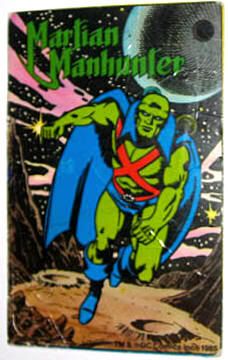
The Martian Manhunter toy came with a cloth cape, the mini-comic Super Powers Collection 14, and a mechanized "Power Action Martian Punch." The figure shipped in a plastic blister case attached to cardboard. There are several variations on the card, with some slimmer than others. The front offered two versions of a pin-up of the main character, one a detail, the other with a space scene backdrop. The back of the card advertised other figures in the line, special offers, and a text piece detailing who exactly the Martian Manhunter was. If you cut along dotted edges, the pin-up and descriptive text could be turned into a "bio card" and saved.
I was fond of both lines growing up, but generally preferred the more militaristic toys like G.I. Joe and its countless knock-offs. I think this was because I was so familiar with the super-heroes, that I could never make them "my" characters. I would instead take an obscure Cobra villain or American Defense nobody and turn them into characters whose destinies I could control. I also loved the greater degree of articulation and accessories outside the super-hero lines. I suspect this played into the Toy Biz renaissance of the 1990s, which while retaining the slightly larger figure size, offered much greater playability and diversity than Mattel and Kenner's combined offerings in the super-hero genre. Still, there's a lot to love about Super Powers and Secret Wars, especially my beloved Martian Manhunter action figure, so we're happy to celebrate the quarter-century anniversaries of both.
For more on the Super Powers Collection, visit Jason Geyter's indispensable Super Powers Archive, as well as Mike Mensinger's outstanding Hall of Justice Super Powers site. Fans of Marvel Super Heroes Secret Wars should visit Steven Moreno's invaluable Secret Wars Archive, as well as The Mattel Secret Wars Archive and The Ultimate Guide to Marvel Super Heroes Secret Wars.
Super Powers Martian Manhunter photos and information:
Final Frontier Toys (Large Pictures)
Loose
Loose with Bio Card
Mint On Card
Mint In Case
...and because he'd become a Manhunter foe over a decade later...
Darkseid Loose
Darkseid Carded
Martian Manhunter Unpainted Hardcopy
Finally...




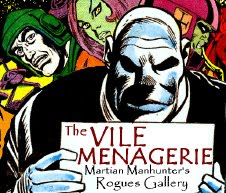


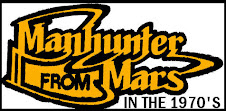
















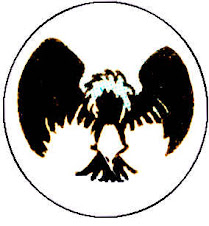




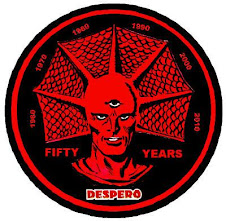
4 comments:
Fantastic review! Well done. Incredibly thorough.
The Irredeemable Shag
http://firestormfan.com
http://onceuponageek.com
I just wish I had managed to get it done last Monday as intended. Better late than never, but a disappointment nonetheless. Onward on Week Two!
I had some Mego and Star Wars doll... err, I mean action figures. When the Super Powers line was introduced in the mid '80s I was in my teens and decided I was too old to play with... action figures. (Action figures is what I said.)
How cool is it that the copy on MM's package actually mentions Mr. V of Vulture?!
Dude, I know, right?!? I had no recollection of that whatsoever!
Blessedly, I was born in the sweet spot of the golden age of action figures. I was allowed to play with original Star Wars/G.I. Joe/Indiana Jones/Robotech/Micronauts figures, plus I had a whole separate universe for He-Man/Warlord/Spiral Zone/Power Lords/etc. By the time I was getting to old for action figures, they were going through their fallow period of stupid gonzo Joes, Toy Biz Batman, and lines dying left and right. I never warmed much to Toy Biz's Marvel stuff, and DC Direct launched in time to set their cheap statuettes on a shelf and enjoy them without making punching noises.
Post a Comment